

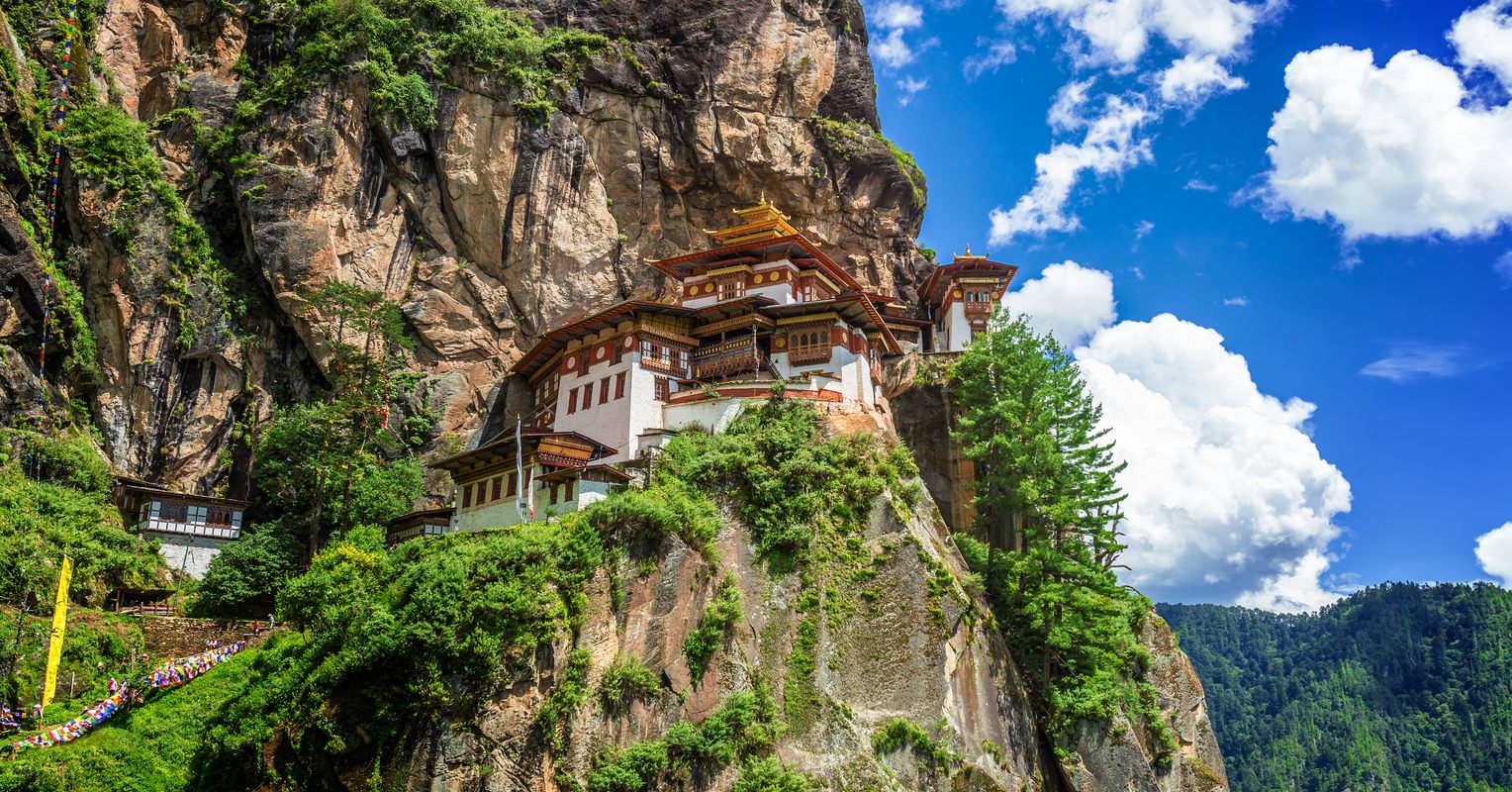
Asia
11 days
10 nights
10 people
Moderate
History & Culture

Nestled in the heart of the Himalayas, the Kingdom of Bhutan is a tiny country home to pristine forests, extraordinary architecture, and rich cultural traditions. Join us as we journey from bustling Thimphu to the Phobjikha Valley, lush with greenery and wildlife, and finally through the small village of Haa. You’ll witness an annual festival and visit ancient dzongs, art studios, incense factories, and nature preserves—meeting artisans, monks, and farmers along the way. Your adventure will culminate with an ascent to the Taktsang Lhakhang, also known as the “Tiger’s Nest”—the striking cliffside Buddhist temple where Guru Padmasambhava is said to have meditated for four months.
NOTE: This trip has three distinct departures.
The itinerary you see below is for the Thimphu Festival departure.
The changes for the other two departures (on Day 2 & Day 4) are marked below.
June 16-25th, 2024 (non-festival departure)
September 12-22, 2024 (Thimphu festival departure)
November 7-17, 2024 (Black Necked Crane festival departure)
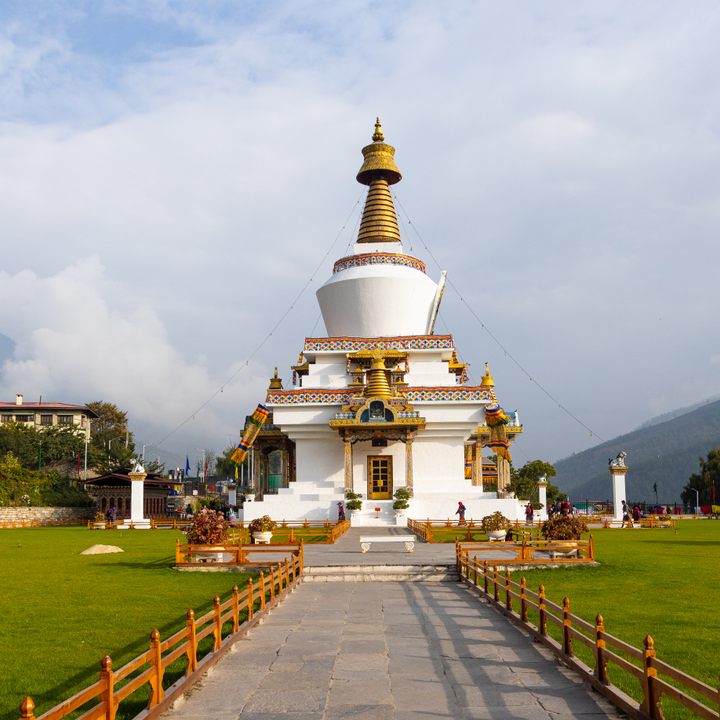
As you make the dramatic descent into Paro International Airport, you will enjoy spectacular views of the Himalayas looming high above the runway. Your first stop is Bhutan’s capital and largest city, Thimphu, where music venues and bustling bars abound. After taking some time to settle in at the hotel, you’ll visit a mother and daughter led textile shop. Keep your eyes peeled for garments such as gho or kira that you could wear to the Thimphu Tsechu tomorrow. Later, you’ll learn about the daily practice of Buddhist prayer at the National Memorial Chorten. We’ll celebrate our first evening together with a welcome dinner, where we’ll get to know each other over traditional Bhutanese cuisine.

As you make the dramatic descent into Paro International Airport, you will enjoy spectacular views of the Himalayas looming high above the runway. Your first stop is Bhutan’s capital and largest city, Thimphu, where music venues and bustling bars abound. After taking some time to settle in at the hotel, you’ll visit a mother and daughter led textile shop. Keep your eyes peeled for garments such as gho or kira that you could wear to the Thimphu Tsechu tomorrow. Later, you’ll learn about the daily practice of Buddhist prayer at the National Memorial Chorten. We’ll celebrate our first evening together with a welcome dinner, where we’ll get to know each other over traditional Bhutanese cuisine.
The Willows Hotel or similar, Thimphu
Welcome Dinner
The Willows Hotel or similar, Thimphu
Welcome Dinner
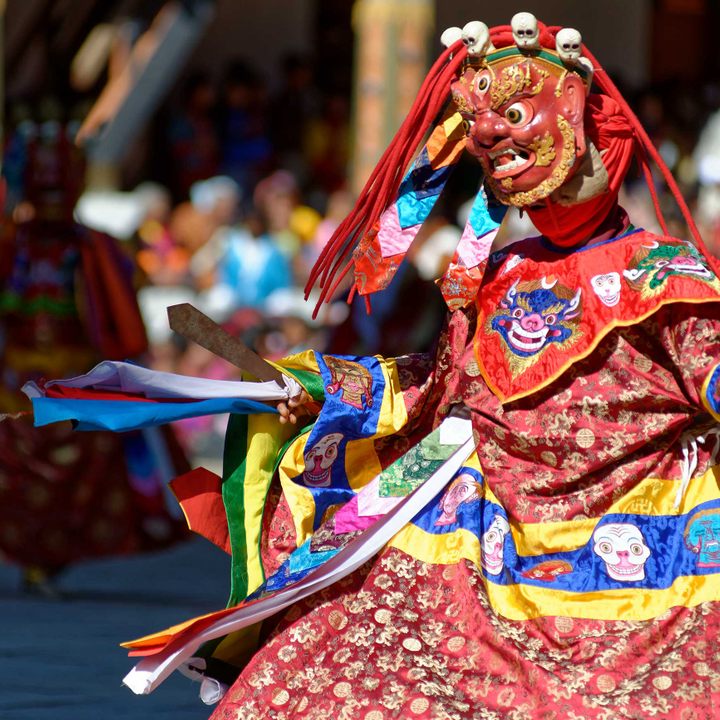
Today, you’ll head out to the spectacular Tashichho Dzong monastery to witness the annual Thimphu Tshechu festival. Joined by thousands of residents dressed for the occasion, dancers in elaborate masks will reenact moments from the lives of celebrated Buddhist figures. Meanwhile Atsaras, or Bhutanese clowns, in perpetually grinning red masks will crack jokes and rile up the crowd. After a morning of celebration, you’ll head to an artist studio that connects Bhutanese youth to contemporary art. From there, you’ll head to Pangrizampa, a 17th century institute for traditional astrology nestled in the mountains, where you’ll learn about the central role that astrology has played in Bhutanese traditions, from choosing dates for important ceremonies to picking names for newborns. Then you’ll head back to our hotel for a good night’s sleep.

Today, you’ll head out to the spectacular Tashichho Dzong monastery to witness the annual Thimphu Tshechu festival. Joined by thousands of residents dressed for the occasion, dancers in elaborate masks will reenact moments from the lives of celebrated Buddhist figures. Meanwhile Atsaras, or Bhutanese clowns, in perpetually grinning red masks will crack jokes and rile up the crowd. After a morning of celebration, you’ll head to an artist studio that connects Bhutanese youth to contemporary art. From there, you’ll head to Pangrizampa, a 17th century institute for traditional astrology nestled in the mountains, where you’ll learn about the central role that astrology has played in Bhutanese traditions, from choosing dates for important ceremonies to picking names for newborns. Then you’ll head back to our hotel for a good night’s sleep.
The Willows Hotel or similar, Thimphu
Breakfast, Lunch, Dinner
Non-festival itinerary:
-Pangrizampa (an institute for traditional astrology founded in the early 17th century)
-Option to experience Simply Bhutan, an interactive living museum showcasing the traditional Bhutanese lifestyle.
-Tashi Chodzong (a monumental fortress-monastery)
-Memorial Chorten (a significant religious monument)
-Buddha Point (marked by a majestic Buddha statue)
The Willows Hotel or similar, Thimphu
Breakfast, Lunch, Dinner

You have the option of taking a behind-the-scenes tour of a traditional incense factory this morning, catching a glimpse of the complex production process behind the creation of each fragrant stick. Then we’ll regroup for a visit to the Buddha Dordenma, a 169-foot golden Buddha statue perched atop a meditation hall. With 125,000 tiny, bronze Buddhas encapsulated in its chest, the statue’s Buddha population is larger than Thimphu’s human one! After taking some time to stretch our legs, you’ll embark on a five-hour drive to Phobjikha, a glacial valley home to grassy meadows, blue pines, and rare, black-necked cranes. Arriving by early evening, you’re free to settle into your hotel and enjoy the serenity of your surroundings.

You have the option of taking a behind-the-scenes tour of a traditional incense factory this morning, catching a glimpse of the complex production process behind the creation of each fragrant stick. Then we’ll regroup for a visit to the Buddha Dordenma, a 169-foot golden Buddha statue perched atop a meditation hall. With 125,000 tiny, bronze Buddhas encapsulated in its chest, the statue’s Buddha population is larger than Thimphu’s human one! After taking some time to stretch our legs, you’ll embark on a five-hour drive to Phobjikha, a glacial valley home to grassy meadows, blue pines, and rare, black-necked cranes. Arriving by early evening, you’re free to settle into your hotel and enjoy the serenity of your surroundings.
Dewachen Hotel or similar, Phobjikha
Breakfast, Lunch, Dinner
Dewachen Hotel or similar, Phobjikha
Breakfast, Lunch, Dinner
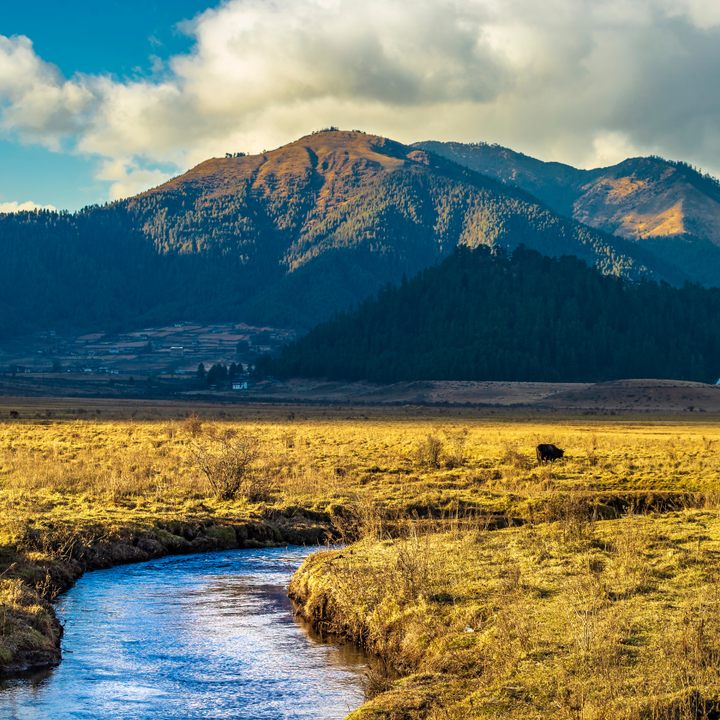
Perched atop a hill overlooking the lush, green sprawl of the Phobjikha Valley, Gangtey Goemba is an ornate 17th century monastery. Gangtey's current head lama is an incarnation of the site's legendary founder and visionary, Pema Lingpa, a 14th century saint, and terton (discoverer of spiritual treasures). Spend the morning exploring the complex before venturing out along Gangtey Nature Trail, a moderate (optional) hike with breathtaking views. Next you’ll head to the Royal Society for the Protection of Nature to meet Karma, a black-necked crane that suffered multiple fractures to its left wing before it was rescued and rehabilitated here. After that you’ll meet with several local agriculturalists who will teach you some of their farming practices. We’ll return to our hotel for dinner and another peaceful night’s rest.

Perched atop a hill overlooking the lush, green sprawl of the Phobjikha Valley, Gangtey Goemba is an ornate 17th century monastery. Gangtey's current head lama is an incarnation of the site's legendary founder and visionary, Pema Lingpa, a 14th century saint, and terton (discoverer of spiritual treasures). Spend the morning exploring the complex before venturing out along Gangtey Nature Trail, a moderate (optional) hike with breathtaking views. Next you’ll head to the Royal Society for the Protection of Nature to meet Karma, a black-necked crane that suffered multiple fractures to its left wing before it was rescued and rehabilitated here. After that you’ll meet with several local agriculturalists who will teach you some of their farming practices. We’ll return to our hotel for dinner and another peaceful night’s rest.
Dewachen Hotel or similar, Phobjikha
Breakfast, Lunch, Dinner
Non-festival itinerary:
-Gangtey Goemba (ornate 17th-century monastery)
-Gangtey Nature Trail (an optional moderate hike with breathtaking views)
-Royal Society for Protection of Nature (to meet Karma, a black-necked crane)
-Meet with several local agriculturalists
Black-necked Crane festival itinerary:
-Gangtey Goemba (ornate 17th-century monastery)
-Witness the Black necked crane festival.
-Royal Society for Protection of Nature (to meet Karma, a black-necked crane)
-Meet with several local agriculturalists
Dewachen Hotel or similar, Phobjikha
Breakfast, Lunch, Dinner
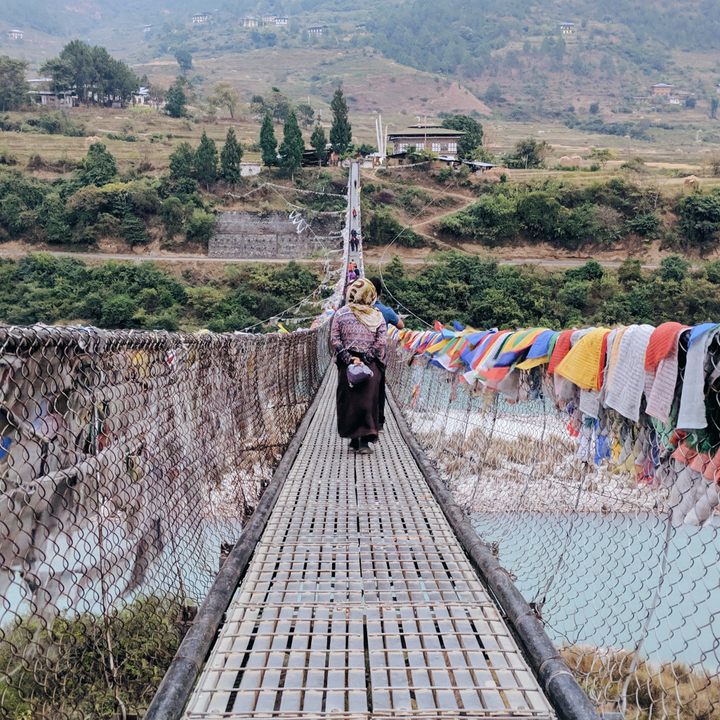
Punakha is first up on your itinerary today, a spectacular valley at the junction of two major rivers. You’ll stop at the majestic Punakha Dzong, or ‘Palace of Great Bliss,’ once the winter fortress of the chief hierarch of Bhutanese Buddhism, it now houses some of the country’s most sacred relics. Next, you’ll cruise down the waters of the winding Mo Chhu River via raft. Alternatively, if river rafting is not your thing, opt to explore the town or relax by the river. Later, you’ll journey across Bhutan’s longest suspension bridge, which stretches nearly 500 feet. Hovering high above the rushing waters of the Pho Chhu River, the views of the valley from here are utterly breathtaking. Take some time to relax this evening before we gather together for dinner.

Punakha is first up on your itinerary today, a spectacular valley at the junction of two major rivers. You’ll stop at the majestic Punakha Dzong, or ‘Palace of Great Bliss,’ once the winter fortress of the chief hierarch of Bhutanese Buddhism, it now houses some of the country’s most sacred relics. Next, you’ll cruise down the waters of the winding Mo Chhu River via raft. Alternatively, if river rafting is not your thing, opt to explore the town or relax by the river. Later, you’ll journey across Bhutan’s longest suspension bridge, which stretches nearly 500 feet. Hovering high above the rushing waters of the Pho Chhu River, the views of the valley from here are utterly breathtaking. Take some time to relax this evening before we gather together for dinner.
Spirit Village Lodge, or similar, Punakha
Breakfast, Lunch, Dinner
Spirit Village Lodge, or similar, Punakha
Breakfast, Lunch, Dinner

Later, we may visit Khamsum Yulley Namgyal Chorten, a stupa that’s home to a slew of massive statues of wrathful deities thought to ward off evil spirits. Or we could visit Chimi Lhakhang, the fertility temple devoted to the "Divine Madman" and saint, Drukpa Kunley. Tonight we’ll head back to our cozy resort for our final night in Punakha.

Later, we may visit Khamsum Yulley Namgyal Chorten, a stupa that’s home to a slew of massive statues of wrathful deities thought to ward off evil spirits. Or we could visit Chimi Lhakhang, the fertility temple devoted to the "Divine Madman" and saint, Drukpa Kunley. Tonight we’ll head back to our cozy resort for our final night in Punakha.
Spirit Village Lodge, or similar, Punakha
Breakfast, Lunch, Dinner
Spirit Village Lodge, or similar, Punakha
Breakfast, Lunch, Dinner
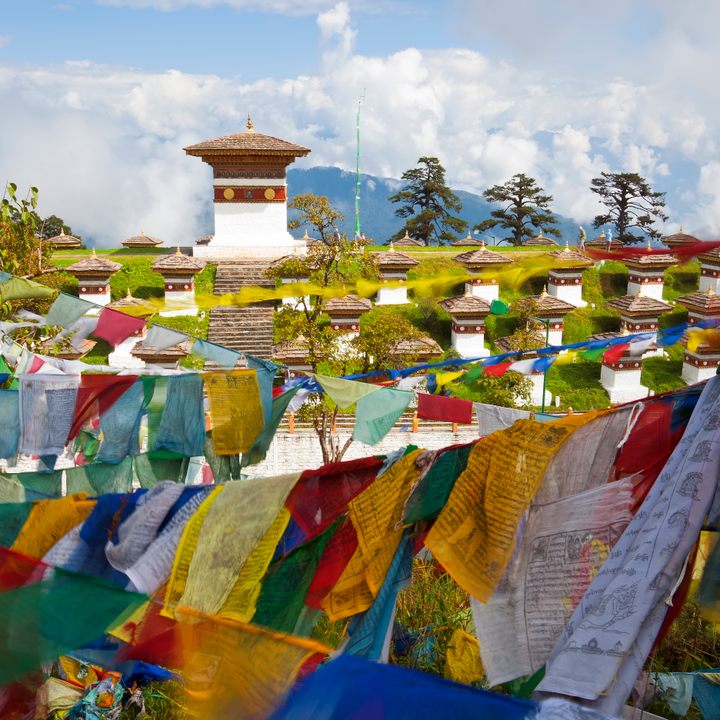
Today we head back to Thimphu and then ascend on a walk through a winding, densely forested trail marked by a string of prayer flags. At the top lies Cheri Monastery, a century-old structure that once housed Bhutan’s first monastic order. After a picnic lunch we’ll head back to the capital city for a free afternoon and a night out in Thimphu town together.

Today we head back to Thimphu and then ascend on a walk through a winding, densely forested trail marked by a string of prayer flags. At the top lies Cheri Monastery, a century-old structure that once housed Bhutan’s first monastic order. After a picnic lunch we’ll head back to the capital city for a free afternoon and a night out in Thimphu town together.
The Willows Hotel, or similar, Thimphu
Breakfast, Lunch, Dinner
The Willows Hotel, or similar, Thimphu
Breakfast, Lunch, Dinner
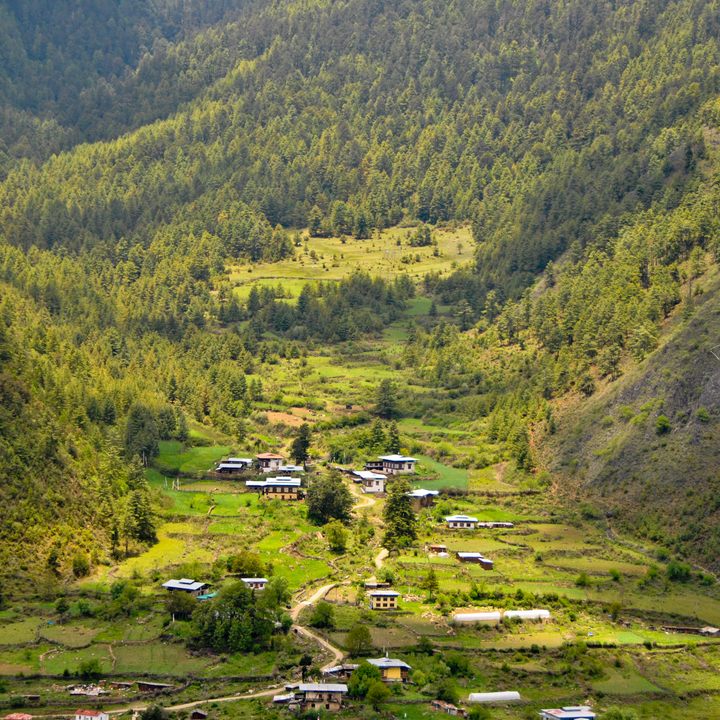
At an altitude of nearly 13,000 feet, Chelela Pass is one of the highest drivable stretches of road in Bhutan. The views as we drive across it, heading toward Haa Valley, will captivate you. One of the country’s smaller districts, Haa is home to bustling bazaars, terraced hillsides, and vast stretches of pristine forest. Here you’ll explore two of the region’s most iconic temples: Lhakhang Karpo (The White Temple) and Lhakhang Nagpo (The Black Temple). It’s said that when searching for the right place to build a new temple, the king of Tibet released two doves. The first landed on the site where Lhakhang Nagpo now stands while the second landed at the site of Lhakhang Karpo. After exploring the temples, we’ll head to our cozy farm stay for the night.

At an altitude of nearly 13,000 feet, Chelela Pass is one of the highest drivable stretches of road in Bhutan. The views as we drive across it, heading toward Haa Valley, will captivate you. One of the country’s smaller districts, Haa is home to bustling bazaars, terraced hillsides, and vast stretches of pristine forest. Here you’ll explore two of the region’s most iconic temples: Lhakhang Karpo (The White Temple) and Lhakhang Nagpo (The Black Temple). It’s said that when searching for the right place to build a new temple, the king of Tibet released two doves. The first landed on the site where Lhakhang Nagpo now stands while the second landed at the site of Lhakhang Karpo. After exploring the temples, we’ll head to our cozy farm stay for the night.
Local farmstay, Haa
Breakfast, Lunch, Dinner
Local farmstay, Haa
Breakfast, Lunch, Dinner
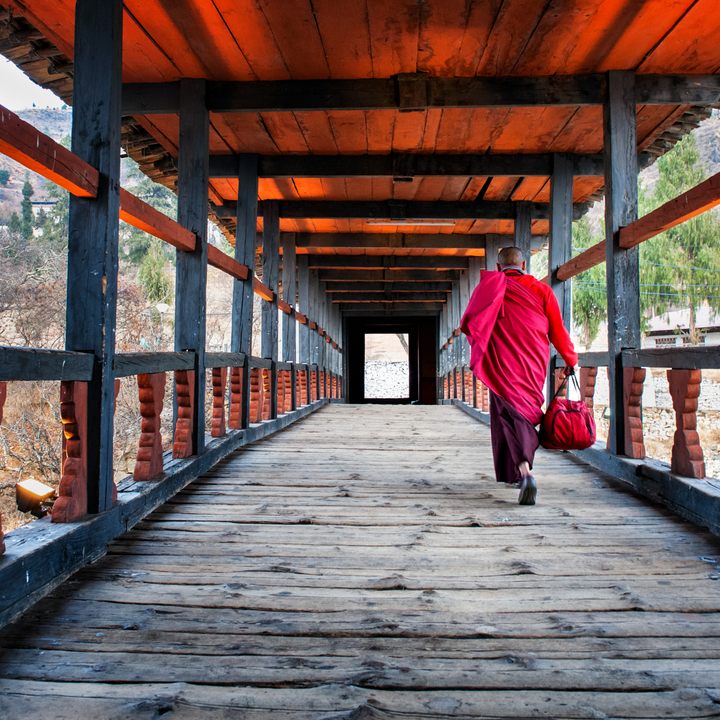
We’re heading back to Paro today, where you’ll have the opportunity to explore the town at your own pace. Consider taking a gentle hike to some of the nearby temples, watching a local archery event, or strolling through the farmers’ market. At an additional cost, you can also opt to take a traditional Bhutanese hot stone bath or get a massage. Be sure to get some rest tonight; tomorrow we’re hiking up to the Taktsang Monastery!

We’re heading back to Paro today, where you’ll have the opportunity to explore the town at your own pace. Consider taking a gentle hike to some of the nearby temples, watching a local archery event, or strolling through the farmers’ market. At an additional cost, you can also opt to take a traditional Bhutanese hot stone bath or get a massage. Be sure to get some rest tonight; tomorrow we’re hiking up to the Taktsang Monastery!
Tenzingling Resort, or similar, Paro
Breakfast, Lunch, Dinner
Tenzingling Resort, or similar, Paro
Breakfast, Lunch, Dinner
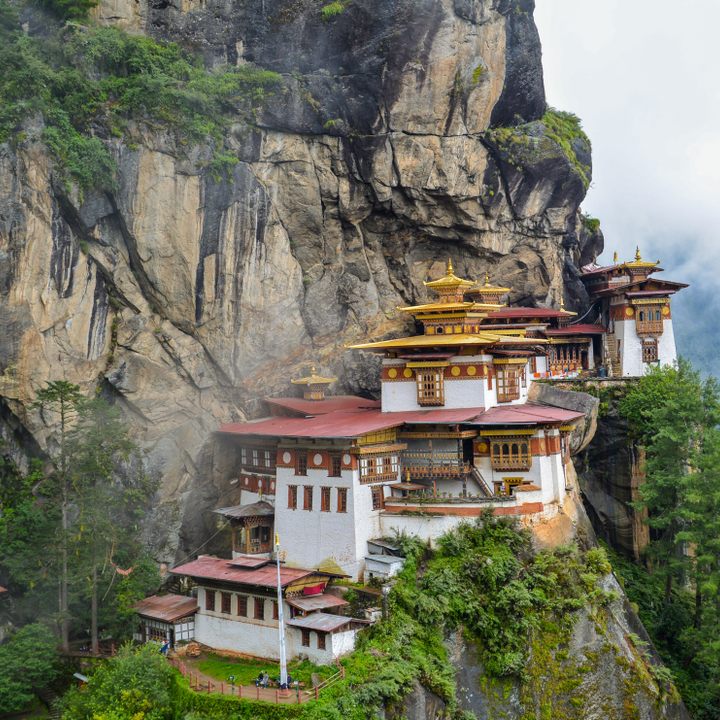
This morning we’ll set out for Taktsang Monastery, one of the most venerated Buddhist destinations in Bhutan. Also known as the Tiger’s Nest, the monastery is set into a cliff face nearly 2,600 feet above the Paro Valley floor. The journey will require a challenging but rewarding climb, complete with spectacular views. (Note that if you’d prefer not to make the hike, other options are available.) At the top, there will be time to explore the various parts of the monastery and participate in a conversation with a prominent Bhutanese monk. After the return descent, take some time to rest and freshen up before we gather for our final dinner together.

This morning we’ll set out for Taktsang Monastery, one of the most venerated Buddhist destinations in Bhutan. Also known as the Tiger’s Nest, the monastery is set into a cliff face nearly 2,600 feet above the Paro Valley floor. The journey will require a challenging but rewarding climb, complete with spectacular views. (Note that if you’d prefer not to make the hike, other options are available.) At the top, there will be time to explore the various parts of the monastery and participate in a conversation with a prominent Bhutanese monk. After the return descent, take some time to rest and freshen up before we gather for our final dinner together.
Tenzingling Resort, or similar, Paro
Breakfast, Lunch, Dinner
Tenzingling Resort, or similar, Paro
Breakfast, Lunch, Dinner

This morning, we’ll say our goodbyes before returning to Paro International Airport. From here, ascend through the Himalayas and homeward. Until the next adventure!
Deposit to book your trip: $250 USD.
Balance due 90 days prior to departure.
The listed price of the trip is per person based on double occupancy.
Deposit to book your trip: $250 USD.
Balance due 90 days prior to departure.
The listed price of the trip is per person based on double occupancy.
You’re in good company.
Opt for a Private Room to yourself, subject to availability, for a supplemental cost of $470 USD.
Solo travelers typically make up about half of our small groups. With curiosity at the center of our experiences, there’s a natural camaraderie that develops over the course of a trip.
If you don’t opt for a Private Room, you'll be matched with another solo traveler of the same gender.
You’re in good company.
Opt for a Private Room to yourself, subject to availability, for a supplemental cost of $470 USD.
Solo travelers typically make up about half of our small groups. With curiosity at the center of our experiences, there’s a natural camaraderie that develops over the course of a trip.
If you don’t opt for a Private Room, you'll be matched with another solo traveler of the same gender.
Travelers should be comfortable walking between three and five miles per day without difficulty, and spending extended periods of time on their feet. For those interested in trekking, there will be opportunities for longer and more challenging hikes on certain days of the trip. Some of the places visited on this trip are extremely remote. It can take days to reach the nearest modern medical facility. Travelers prone to vertigo are discouraged to do the Suspension bridge walk in Punakha. The Tiger's Nest Hike on Day 11 is a challenging hike that requires uphill trekking and stairs. For those concerned with the difficulty level, there is the option to hike half way at a slower pace and enjoy the view from the cafe at the halfway point.
Travelers should be comfortable walking between three and five miles per day without difficulty, and spending extended periods of time on their feet. For those interested in trekking, there will be opportunities for longer and more challenging hikes on certain days of the trip. Some of the places visited on this trip are extremely remote. It can take days to reach the nearest modern medical facility. Travelers prone to vertigo are discouraged to do the Suspension bridge walk in Punakha. The Tiger's Nest Hike on Day 11 is a challenging hike that requires uphill trekking and stairs. For those concerned with the difficulty level, there is the option to hike half way at a slower pace and enjoy the view from the cafe at the halfway point.
You should plan to arrive by 2pm on Day 1, and depart anytime on Day 11. Paro International Airport (PBH) connects to a range of flight hubs in Asia, including Bangkok, Kathmandu and Kolkata. The best flight connections to Belgrade are offered by Druk Air and Bhutan Airlines.
*Airport transfers are only provided if arriving & departing on the trip dates, or if pre/post arrangements have been made through Atlas Obscura.
You should plan to arrive by 2pm on Day 1, and depart anytime on Day 11. Paro International Airport (PBH) connects to a range of flight hubs in Asia, including Bangkok, Kathmandu and Kolkata. The best flight connections to Belgrade are offered by Druk Air and Bhutan Airlines.
*Airport transfers are only provided if arriving & departing on the trip dates, or if pre/post arrangements have been made through Atlas Obscura.
A tourist visa is required for U.S. and Canadian passport holders for entry into Bhutan and must be arranged prior to departure. Atlas Obscura will make all arrangements to obtainyour visa authorization. To obtain this pre-authorization, we require a scanned color copy of your passport and a color copy of a passport photo at least 75 days prior to departure. In addition to this, proof of insurance covering COVID-19 is also required (any amount).
A tourist visa is required for U.S. and Canadian passport holders for entry into Bhutan and must be arranged prior to departure. Atlas Obscura will make all arrangements to obtainyour visa authorization. To obtain this pre-authorization, we require a scanned color copy of your passport and a color copy of a passport photo at least 75 days prior to departure. In addition to this, proof of insurance covering COVID-19 is also required (any amount).
The elevations reached on this trip range from approximately 4,000 feet in Punakha to approximately 11,000 feet when crossing the journey's highest pass by road. Travelers should speak with their doctors about appropriate precautions to take, and consider spending an extra night en route to rest and recover from jet lag before continuing on to Bhutan. It's important to bear in mind that high-quality emergency medical care may be a day or more away due to the remoteness of some of the areas we'll visit.
The elevations reached on this trip range from approximately 4,000 feet in Punakha to approximately 11,000 feet when crossing the journey's highest pass by road. Travelers should speak with their doctors about appropriate precautions to take, and consider spending an extra night en route to rest and recover from jet lag before continuing on to Bhutan. It's important to bear in mind that high-quality emergency medical care may be a day or more away due to the remoteness of some of the areas we'll visit.
For one night in Haa we will be hosted in a local farmstay. Our accommodations here will be comfortable but rustic, with bedding consisting of mattresses placed on the floor, shared western toilet facilities, and a home-cooked meal.
While there is running water for washing, separate drinking water, tea, and coffee will be provided. There will be no shower or bathing facilities at the farm stay for this one night.
For one night in Haa we will be hosted in a local farmstay. Our accommodations here will be comfortable but rustic, with bedding consisting of mattresses placed on the floor, shared western toilet facilities, and a home-cooked meal.
While there is running water for washing, separate drinking water, tea, and coffee will be provided. There will be no shower or bathing facilities at the farm stay for this one night.
Check out the Essential Trip Information for this trip or our general FAQs.
Call us at +1 833-919-9154
Send us a
Have a question for us about Festivals and Temples of Bhutan ? We're here to help!
Call us at +1 646-961-4857
Check out our FAQ
This site is protected by reCAPTCHA and the Google Privacy Policy and Terms of Service apply.
Have a question for us about Festivals and Temples of Bhutan ? We're here to help!
Call us at +1 833-919-9154
Check out our FAQ
This site is protected by reCAPTCHA and the Google Privacy Policy and Terms of Service apply.
Sign up for our emails.
Have a question for us? We're here to help!
Call us at +1 833-919-9154
Check out our FAQ
This site is protected by reCAPTCHA and the Google Privacy Policy and Terms of Service apply.